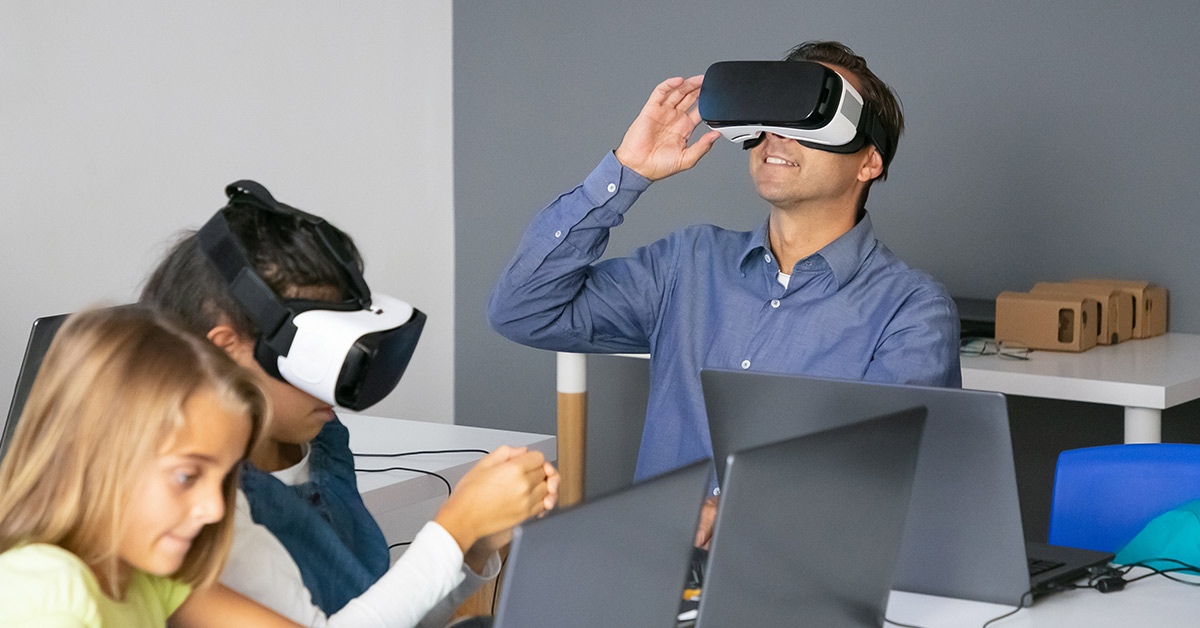
Introduction
In today’s digital age, educational technology has emerged as a powerful force, revolutionizing the way we learn and teach. From interactive online classrooms to cutting-edge learning tools, the integration of technology into education has opened new horizons for students, teachers, and institutions alike. In this article, we will delve into the world of educational technology, exploring its definition, impact, and future prospects.
Defining Educational Technology (H1)
Educational technology, often abbreviated as “EdTech,” encompasses a wide range of tools, software, and devices designed to enhance the learning and teaching experience. It goes beyond the traditional classroom setting, providing innovative solutions that cater to individual learning needs.
The Evolution of EdTech (H2)
The history of educational technology can be traced back to the invention of the printing press, which made books more accessible. However, the real leap occurred with the advent of computers and the internet. This digital revolution paved the way for a new era in education.
The Role of EdTech in Modern Education (H3)
EdTech has become an integral part of modern education. It offers personalized learning experiences, allowing students to progress at their own pace. Additionally, it facilitates communication and collaboration, transcending geographical boundaries.
Types of Educational Technology (H4)
- Online Learning PlatformsOnline learning platforms like Moodle and Blackboard provide a virtual classroom environment where students and teachers can interact seamlessly.
- Interactive Learning AppsMobile apps like Duolingo and Khan Academy offer engaging lessons, making learning fun and interactive.
- Virtual Reality (VR) and Augmented Reality (AR)VR and AR technologies transport students to immersive educational environments, enhancing comprehension and retention.
- Artificial Intelligence (AI) in EducationAI-powered tools analyze student performance, offering tailored recommendations and feedback.
The Impact of EdTech on Learning (H1)
Advantages of Educational Technology (H2)
EdTech offers several benefits to both students and educators:
- Flexibility: Learners can access resources and materials at their convenience, accommodating diverse schedules.
- Personalization: Adaptive learning technologies adjust content to meet individual student needs.
- Global Reach: EdTech enables access to high-quality education regardless of geographical location.
- Engagement: Interactive content and gamification techniques make learning enjoyable.
- Data-Driven Insights: Educators can track student progress and identify areas that require improvement.
Challenges and Concerns (H2)
However, the integration of technology in education is not without its challenges:
- Access Disparities: Not all students have equal access to technology and the internet.
- Security and Privacy: Protecting student data and privacy is a growing concern.
- Teacher Training: Educators need training to effectively utilize EdTech tools.
- Digital Fatigue: Excessive screen time can lead to burnout and reduced engagement.
The Future of Educational Technology (H1)
As technology continues to evolve, so does the potential of educational technology. Here are some future trends to watch:
Artificial Intelligence and Machine Learning (H2)
AI algorithms will become more sophisticated, providing highly personalized learning experiences.
Immersive Learning Environments (H2)
VR and AR will become more accessible, allowing students to explore historical events, science concepts, and more.
Gamification and Edutainment (H2)
Gamified learning experiences will become the norm, making education more interactive and engaging.
Hybrid Learning Models (H2)
Blending in-person and online learning will offer flexibility and adaptability.
Enhanced Teacher Support (H2)
EdTech will continue to assist educators in managing classrooms and assessing student performance.
Conclusion
Educational technology has come a long way, reshaping the education landscape. Its transformative power extends beyond the classroom, fostering a lifelong love for learning. As we move forward, the integration of technology in education will continue to bridge gaps, enhance accessibility, and empower learners worldwide.